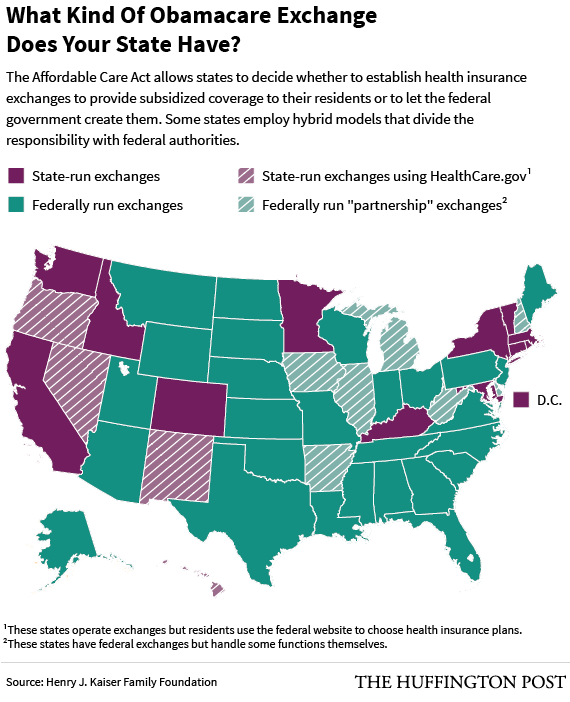WASHINGTON — The nation’s largest health insurance company is scaling back on marketing its products on the Affordable Care Act’s health insurance exchanges and is considering pulling its offerings after the current sign-up period ends, UnitedHealth Group announced Thursday.
The company currently sells health plans in 24 states and covers more than half a million of the approximately 9 million consumers who get their health insurance from the exchanges, or about 5 percent of the market. UnitedHealth is losing money on those customers, prompting the company to warn investors Thursday that its exchange business, while a small part of its portfolio, would negatively impact earnings this year.
The Affordable Care Act has successfully reduced the share of Americans without health insurance, which has declined from 14.4 percent in 2013 to 9 percent through the first half of this year, according to the Centers for Disease Control and Prevention.
But UnitedHealth’s negative outlook reflects uncertainty about the prospects for the exchanges themselves. Insurers report that patients are costlier than expected and premiums are rising an average of 7.5 percent next year, with much higher rate hikes for some products.
The third annual open enrollment period for private health insurance sold on the exchanges began this month and runs until Jan. 31 for benefits that take effect next year. Before sign-ups started, the Department of Health and Human Services downgraded its projections for increased enrollment this year and expects fewer than 1 million new people will use the exchanges to obtain coverage for 2016. Almost 1.1 million people signed up for insurance from Nov. 1 to Nov. 14, and 34 percent of them are new to the exchanges, the Centers for Medicare and Medicaid Services announced Wednesday.

Since the rollout of the health insurance exchanges two years ago, a key question about their future has been whether an adequate number of healthy people would enroll in plans to offset the expenses incurred by those with greater medical needs. For the 2016 enrollment season, insurers for the first time had actual data on their customers’ health care usage, and saw higher-than-expected utilization of services, leading to financial losses and larger premium increases on average across the country.
This dynamic contributed to the closure of most of the nonprofit co-op health insurance plans created under the health care law, and other private health insurance companies report concerns about the profitability of the market.
“In recent weeks, growth expectations for individual exchange participation have tempered industrywide, co-operatives have failed, and market data has signaled higher risks and more difficulties while our own claims experience has deteriorated, so we are taking this proactive step,” UnitedHealth Group CEO Stephen Hemsley said in a press release, referring to the company’s revision of its earnings projections.
It would be a blow to Obamacare if UnitedHealth departs the exchanges in 2017, even if only as a indication that the health insurance industry has genuine doubts about whether it can make money in this new system.
A large potential untapped market for the exchanges exists, however. As of June 30, 17.5 million people are eligible to use them who aren’t doing so, according to the Henry J. Kaiser Family Foundation. Only 36 percent of those who qualify for exchange coverage — people who don’t have access to coverage from other sources, like Medicare or Medicaid, or job-based benefits — got their health insurance from the marketplaces.
Affordability remains a significant concern for the population being sought by the health insurance exchanges and the companies selling products within them, especially for healthy consumers who don’t see the value in an insurance policy they don’t think they’ll use. Yet financial assistance is available for this coverage.
Eighty-seven percent of those who have private coverage through these exchanges receive tax credits to reduce their premiums, as do people who earn between the federal poverty level — about $12,000 for a single person — and up to four times that amount. Those subsidies are generous for people on the lower end of the income scale, but their value diminishes near the top of the subsidy range, and households that earn more than four times the poverty level don’t qualify for assistance.
The amount subsidy-eligible exchange customers actually pay is capped as a percentage of their incomes, so those with low earnings may be largely shielded from the premium increases. Those facing big rate hikes may be able to avoid them by switching to another policy, because prices vary greatly.
